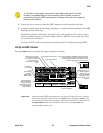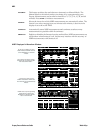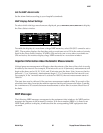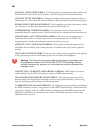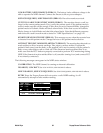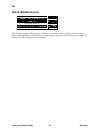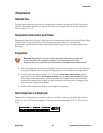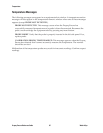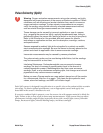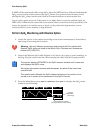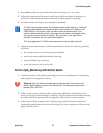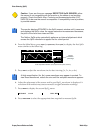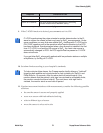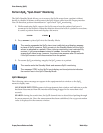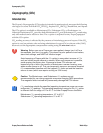
Pulse Oximetry (SpO2)
Welch Allyn 68 Propaq Encore Reference Guide
Pulse Oximetry (SpO
2
)
Each SpO
2
sensor is designed for application to a specific site on the patient within a certain
size range. To obtain optimal performance, use an appropriate sensor and apply it as
described in the sensor’s directions for use.
If excessive ambient light is present, cover the sensor site with opaque material to block the
light. Failure to do so may result in inaccurate measurements. Light sources that can affect
performance include surgical lights (especially those with a xenon light source), bilirubin
lamps, fluorescent lights, infrared heating lamps, and direct sunlight.
Warning Oxygen saturation measurements using pulse oximetry are highly
dependent on proper placement of the sensor and patient conditions. Patient
conditions such as shivering and smoke inhalation may result in erroneous
oxygen saturation readings. If pulse oximetry measurements are suspect,
verify the reading using another clinically accepted measurement method,
such as arterial blood gas measurements on a co-oximeter.
Tissue damage can be caused by incorrect application or use of a sensor
(e.g., wrapping the sensor too tightly, applying supplemental tape, failing to
periodically inspect the sensor site, leaving a sensor on too long in one place).
Refer to the Directions for Use provided with each sensor for specific
instructions on application and use, and for description, warnings, cautions,
and specifications.
Sensors exposed to ambient light while not applied to a patient can exhibit
semi-normal saturation readings. Be sure the sensor is securely placed on the
patient and check its application often to ensure accurate readings.
Inaccurate measurements may be caused by venous pulsations.
The pulse oximetry option can be used during defibrillation, but the readings
may be inaccurate for a short time.
Interfering Substances: Carboxyhemoglobin may erroneously increase
readings; the level of increase is approximately equal to the amount of
carboxyhemoglobin present. Methemoglobin may also cause erroneous
readings. Dyes, or any substances containing dyes, that change usual arterial
pigmentation may cause erroneous readings.
Before you use a Propaq monitor on a new patient, always turn off the monitor
for a few seconds, then turn it on again. This clears the prior patient’s trend
values, alarm limit settings, and NIBP cuff inflation target.



